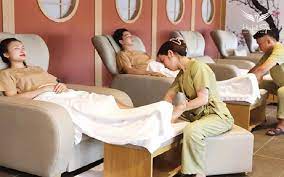
Massage is often celebrated for its ability to provide relaxation and relief from stress, but its benefits extend far beyond mere comfort. Rooted in ancient traditions and supported by modern science, 다낭 가라오케 담당실장이 중요한 이유 therapy is a multifaceted practice that plays a significant role in both physical and mental well-being.
A Historical Perspective
Massage therapy has been an integral part of human culture for thousands of years. The earliest evidence of massage dates back to around 3000 BCE in ancient Egypt, where it was used as a therapeutic practice to treat various ailments and injuries. Greek and Roman civilizations also valued massage, integrating it into their healthcare systems and athletic training.
In China, the practice of massage is documented in texts such as the “Huangdi Neijing,” a classical Chinese medical text that emphasizes the importance of massage for promoting qi (energy) flow and overall health. Similarly, traditional Indian medicine, known as Ayurveda, has long utilized massage to balance the body’s doshas (energies) and maintain wellness.
The Science Behind Massage
Modern research has illuminated many of the physiological and psychological mechanisms underlying massage therapy. Key areas of scientific interest include:
- Pain Relief: Massage has been shown to reduce pain by stimulating the production of endorphins, the body’s natural painkillers. Techniques such as deep tissue massage can target specific muscle groups to alleviate chronic pain and discomfort.
- Improved Circulation: Massage enhances blood flow and lymphatic drainage, which can improve the delivery of oxygen and nutrients to tissues while aiding in the removal of metabolic waste products. This can be particularly beneficial for athletes and individuals recovering from injuries.
- Stress Reduction: The relaxation response induced by massage therapy can lower levels of cortisol, a stress hormone, and promote the release of serotonin and dopamine, neurotransmitters associated with mood enhancement and relaxation.
- Enhanced Flexibility and Range of Motion: Regular massage can help improve flexibility and range of motion by loosening tight muscles, reducing adhesions, and promoting better joint function.
Techniques and Approaches
Massage therapy encompasses a variety of techniques, each with its own benefits and applications:
- Swedish Massage: Known for its gentle, flowing strokes, Swedish massage is designed to promote relaxation and improve circulation. It is often used for general well-being and stress relief.
- Deep Tissue Massage: This technique targets deeper layers of muscle and connective tissue to address chronic pain and muscle tension. It involves slower strokes and deeper pressure compared to Swedish massage.
- Sports Massage: Tailored for athletes, sports massage focuses on preventing and treating injuries, enhancing performance, and reducing muscle soreness. It combines techniques from both Swedish and deep tissue massage.
- Shiatsu: A Japanese form of massage that involves applying pressure to specific points along the body’s meridians (energy pathways) to balance the flow of qi and promote overall health.
- Thai Massage: This dynamic practice incorporates elements of yoga, acupressure, and stretching. It aims to balance the body’s energy and improve flexibility through a combination of rhythmic compression and stretching techniques.
The Future of Massage Therapy
As interest in holistic and integrative health approaches grows, massage therapy is gaining recognition as an essential component of comprehensive healthcare. Research continues to explore its efficacy in treating various conditions, from chronic pain and anxiety to immune system support and rehabilitation.
The integration of technology, such as massage chairs and portable devices, is also expanding the accessibility of massage therapy. These innovations aim to bring the benefits of massage to a broader audience and provide more convenient options for maintaining wellness.
Conclusion
Massage therapy is a time-honored practice with a rich history and a growing body of scientific support. Whether sought for relaxation, pain relief, or performance enhancement, its diverse techniques and benefits make it a valuable tool for promoting overall health and well-being. As we continue to explore its potential, massage remains a testament to the profound connection between touch, healing, and human health.